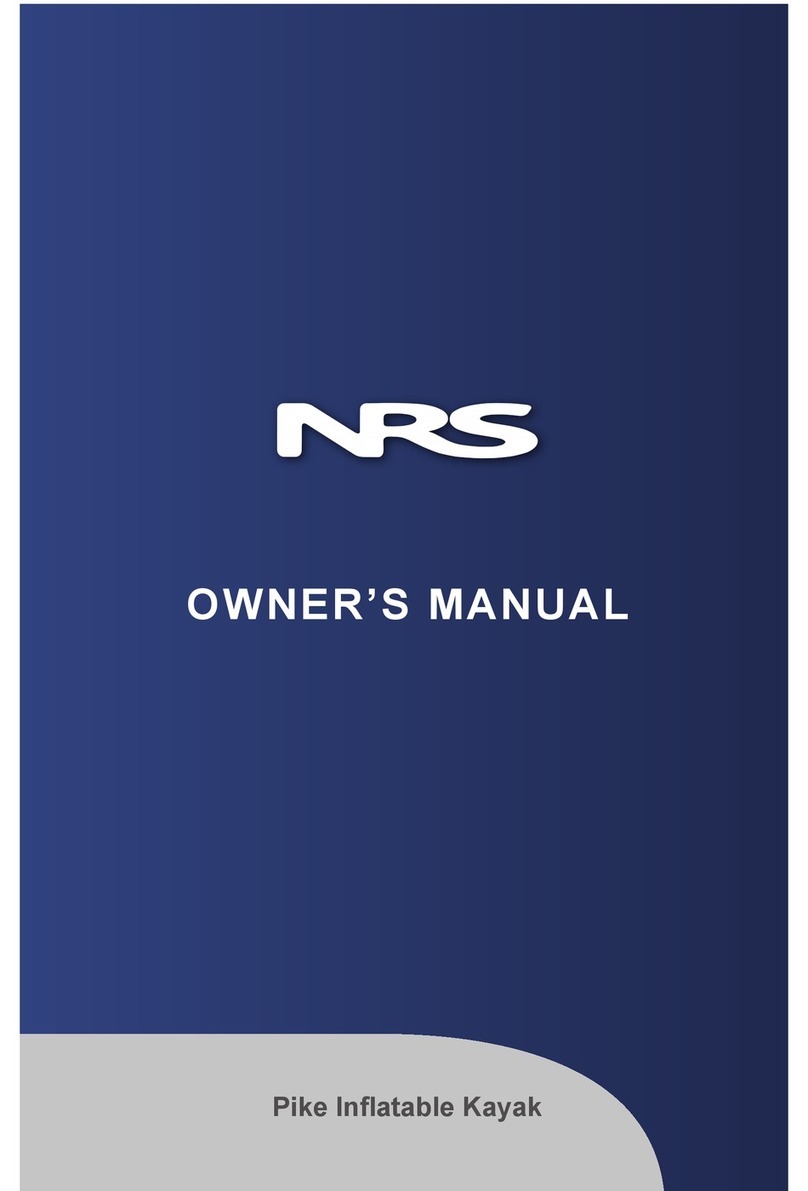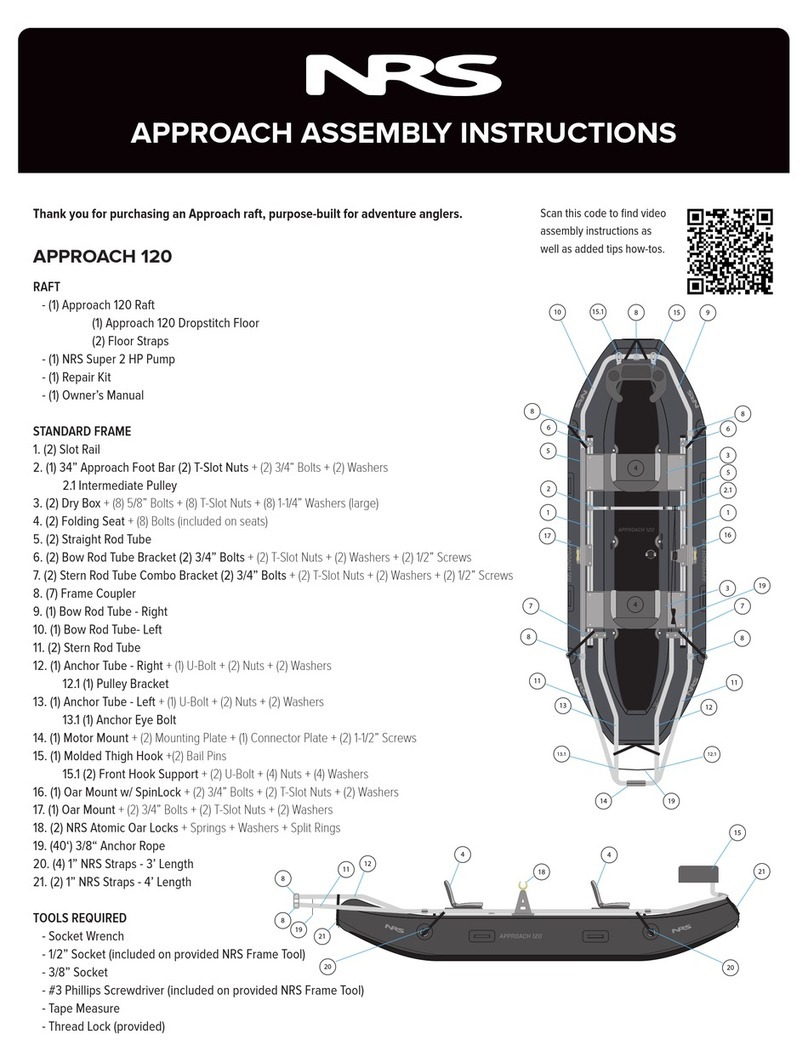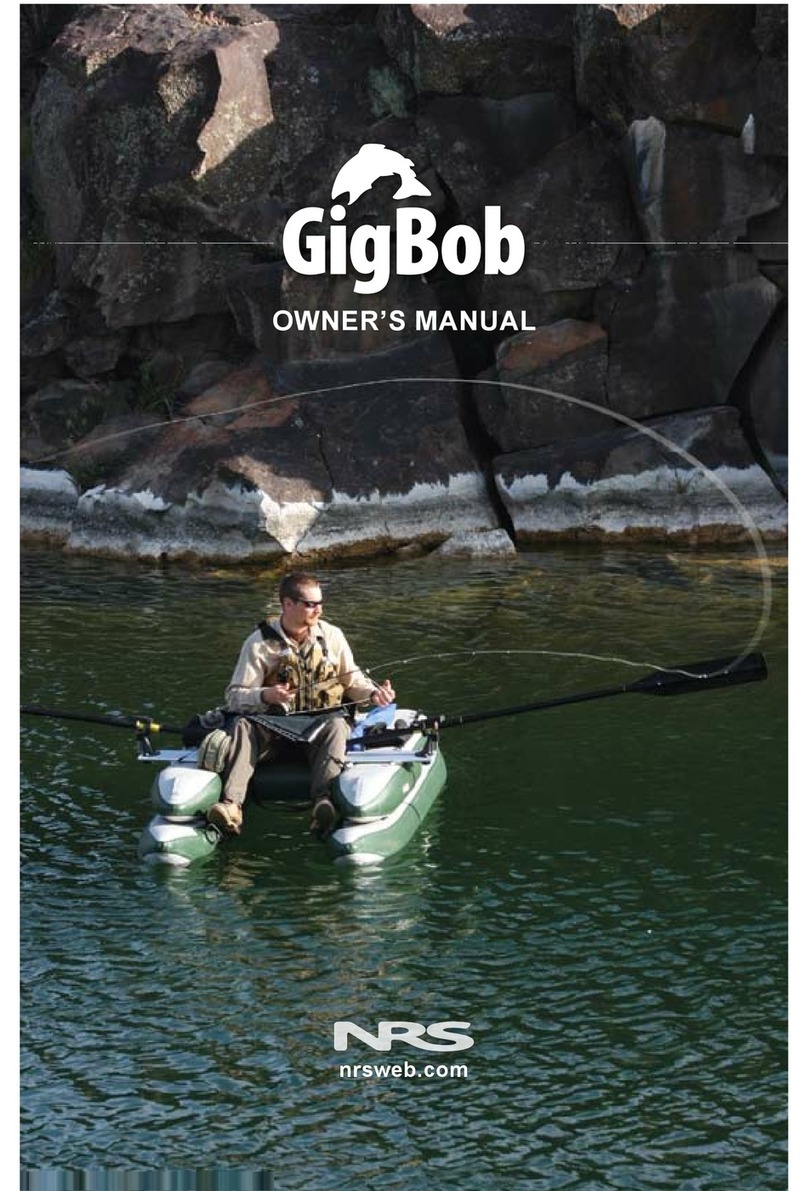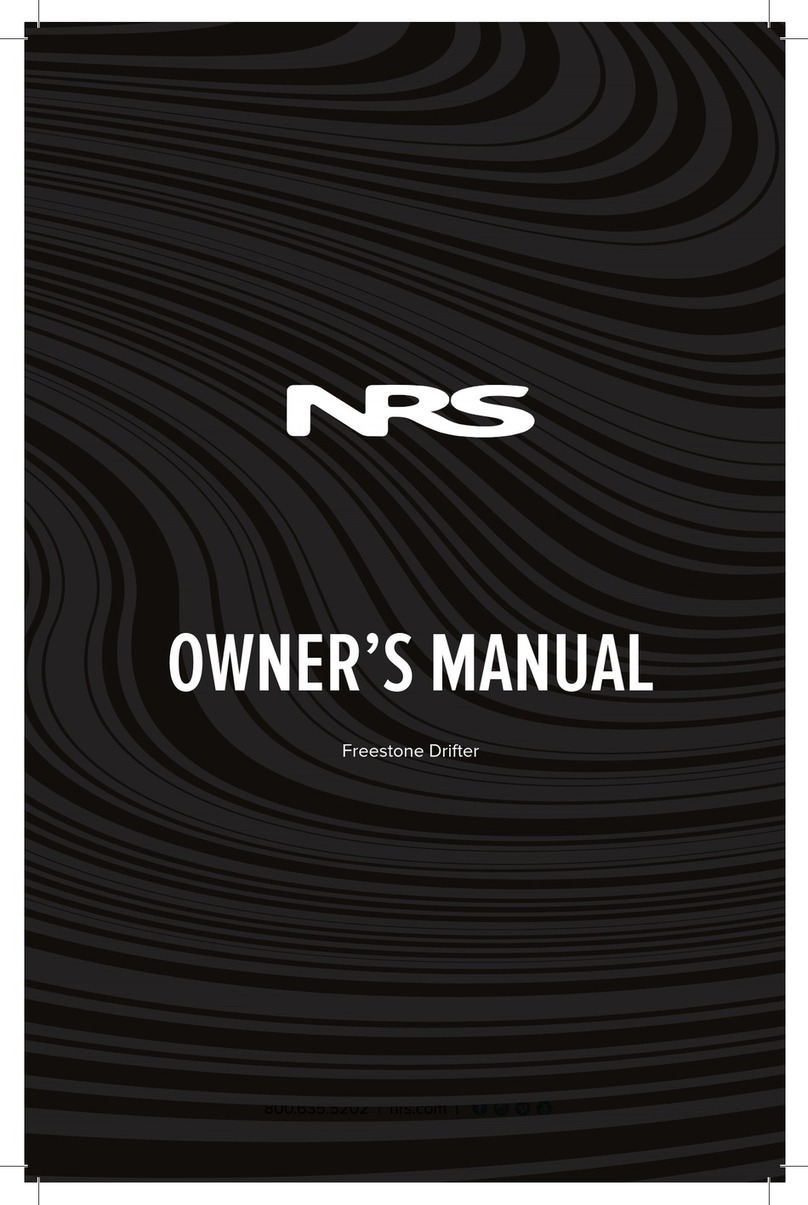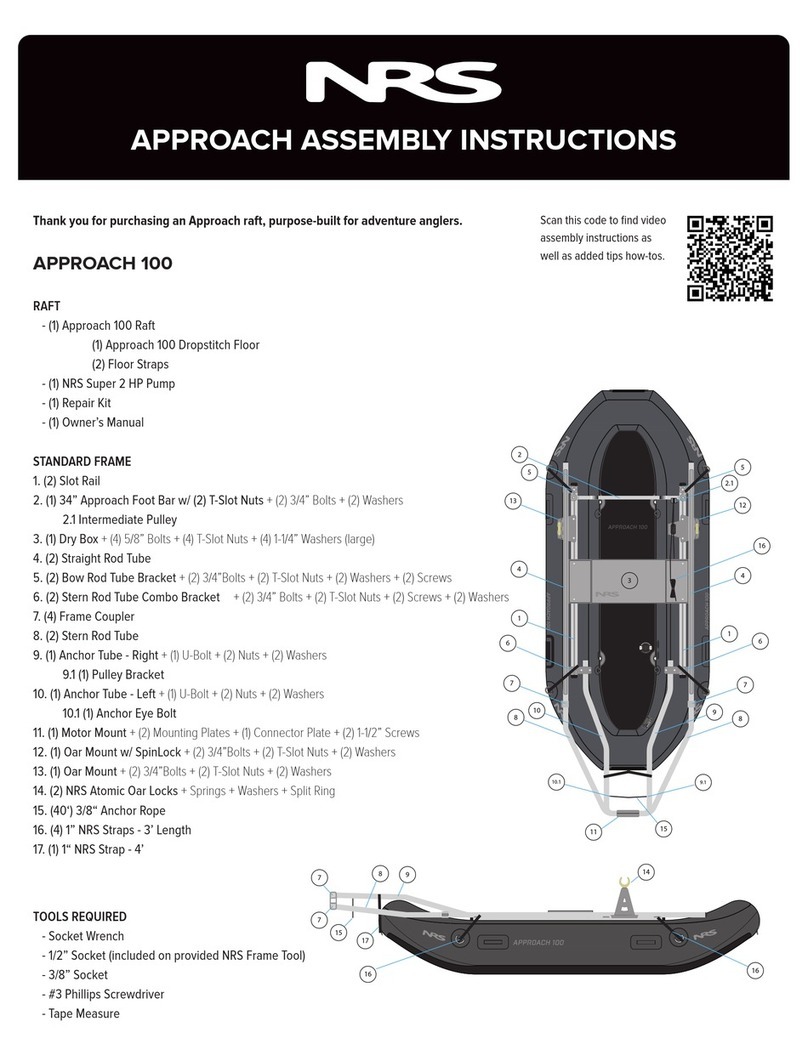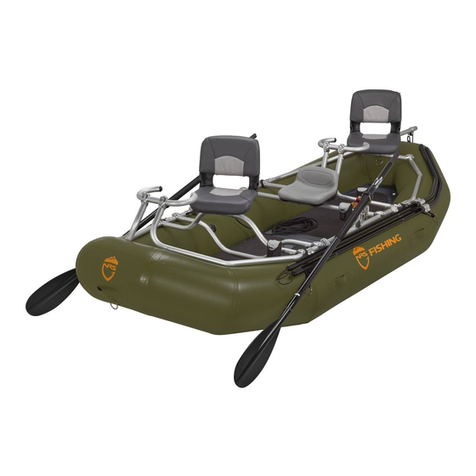4 800.635.5202 | nrs.com |
Cleaning Inate/Deate Valves:
If the inner parts of your inate/deate valves become dirty, the seal may not shut completely against the
valve body, allowing air to escape. You can clean the inner valve parts to restore the airtight seal. Your repair
kit contains a at aluminum valve wrench that you can use to remove the valve from the raft. Threads on both
the ination and pressure relief valves are: clockwise to tighten, counter-clockwise to loosen. The outer half of
the valve unscrews from the inner half. When you remove the outer half of the valve, be sure not to lose the
inner half inside the chamber. With the outer half in your hand, push down and turn the valve stem counter-
clockwise. This lifts the rubber seal off the valve base. Use something like a cotton swab or water pressure
to remove any dirt and grime that has built up on the rubber seal. Hand-tighten the valve back into the valve
base. Inate the chamber fully, and then use the valve wrench to completely tighten the valve.
Cleaning the A6 PR Valve:
If the PR valve fails to shut itself after engaging, it’s probably because the valve seal has accumulated sand
or dirt. To remove the PR valve, start with the oor inated. Loosen the valve using the at aluminum valve
wrench that came in your boat’s repair kit. When you remove the valve from the valve hole, be sure not to
lose the threaded white plastic valve piece that’s inside the oor. Push up on the spring-loaded plunger to lift
the rubber seal off the valve base. Using something like a cotton swab, clean the underside of the rubber seal.
Hand-tighten the valve back into the valve base, then re-inate the oor and use the valve wrench to tighten
the valve the rest of the way.
Note: If the PR valve still does not hold air pressure, plug the valve using the rubber stopper included in your
repair kit. Call NRS Customer Service at 1-800-635-5202 if you need to order a replacement PR valve.
BATTEN ATTACHMENT THWART SYSTEM
Our innovative Batten Attachment Thwart (BAT) system allows you to easily install or remove the thwarts in
your raft. Simply align the slots on the end of the thwart between the attachment slots on the raft chambers,
and slide the batten through all three slots, locking the thwart in place. Thwarts will be easier to install and
remove when the raft and the thwart are both deated.
MAINTENANCE AND CLEANING
Proper care and maintenance will improve your boat’s appearance and longevity. Clean and inspect the boat
after each use. We recommend you coat your raft with 303 Protectant (available through NRS or your local
dealer; item #38751.01) every few months during the season, and before long-term storage to protect against
UV damage and degradation.
You should take care to keep moisture from getting inside the air chambers. Water can enter the chambers
during in-the-eld repairs or if the valves are left open during wet weather. If you nd that moisture and mildew
have accumulated in your boat’s air chambers, the chambers must be aired out. Remove the valve of the
affected chamber and run the hose of an electric air pump through the valve hole. Turn the pump on and allow
the air to circulate into the chamber and out the valve hole for several hours until all the moisture is gone.
PENNEL ORCA®MATERIAL REPAIR
Our Pennel Orca material is “Hypalon-“coated. DuPont® invented Hypalon, but has now ceased making it
and has retired their Hypalon trademark. Pennel uses the exact same chemical compound in their top-quality
Orca material.
Raft repair adhesives and cleaners are toxic. When repairing your boat, always work in a well-ventilated area,
and use a good respirator if possible. Always use proper chemical protection for your skin and eyes.
You will need: our Pennel Orca patch material, medium-grit wet/dry sand paper, and contact adhesive suitable
for Hypalon or other rubber material (we recommend Clifton Hypalon Adhesive, available through NRS or
your local dealer; item #38701.01) and solvent cleaner (toluene, item #38754.01).
Note: Clifton Accelerator, item #38702.01.101, can be added to Clifton Hypalon Adhesive. It shortens the cure
time and strengthens the bond. It is recommended for air holding patches and items such as D-rings that are
subjected to heavy loading. We use this combination of adhesive and accelerator in the manufacture of your
boat.
Measure and cut a patch that will completely cover the area that requires repair. The patch should be bigger
than the repair area, extending an extra 2” or so past the edge of the tear or abrasion. Cut the patch so that
the corners are rounded. Lay the patch over the area to be repaired and trace the outline onto the boat
material. Remove the patch and use the sandpaper to buff the area inside the traced outline. Also buff the







